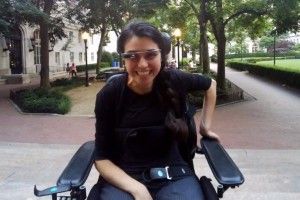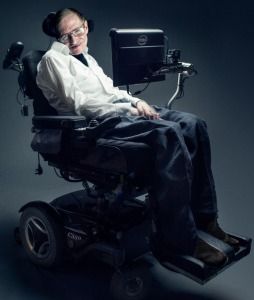Tag: ALS

How Assistive Technology Is Opening New Doors for ALS Patients
Image credit: iDigitalTrends
While the “Ice Bucket Challenge” raised millions to fuel research toward a cure for
amyotrophic lateral sclerosis (ALS), there are a number of assistive technologies already at work to help those currently affected by the disease. According to Alisa Brownlee, a clinical manager for the ALS Association, more assistive technologies and brain-computer-interfaces are on the way. At present, the largest hurdle is access.
Brownlee noted that the loss of communication is often the hardest part of ALS for someone to endure. As ALS is a progressive disease, there are several forms of assistive technology that are used based on a given patient’s physical status. Each form of that technology will work for awhile, but then patients will have to move on to something else as the disease progresses, she says.
Using computer access as one way to help maintain an ALS patient’s communication skills, ALS patients can transition to a track-ball mouse and on-screen keyboard in lieu of a standard computer mouse. From there, a person can use a head-mount, eye-gaze system, and even a tablet computer with a switch scanner.
“It depends on which type of device the individual wants and their physical limitations when we are getting involved with them. They can go from the very simple to the very complex,” Brownlee said. “Technology is wonderful, but it’s not for everyone. So it’s important to involve the person, understand their personality and understand their coping mechanism dealing with the loss of communication.”
While it’s a significant improvement over what was available 10 or 20 years ago, this assistive technology has its limitations, Brownlee said. A system which requires the user to dwell over a letter to type, such as a head mouse, is pretty much limited to five to seven words a minute, which can be frustrating when the average adult speaks about 150 to 200 words a minute. Further, eye-gaze systems can’t be used in natural light by those with underlying eye issues, such as users with tri-focals, torn retinas, or pupils that are too dark; plus, they can be difficult to calibrate.
“That’s the one thing I hear from our caregivers all the time, ‘Hey we can’t get the thing to calibrate!’” she said. “It has to be 23 inches away from the user and, if your positioning is anything less than that, it gets real difficult. It’s just real frustrating.”
Looking to the future of assistive technologies, wearable technology such as Google Glass is already showing great promise in helping those with ALS and other disabilities communicate, Brownlee said. The Google Glass headset is easy to calibrate, can be used in any light, and can be accessed by its user whether they’re sitting up or laying in bed, she said.
Costing a fraction of a standard $15,000 eye-gaze system, Google Glass is more affordable option, Brownlee added. Though there are still some user interface problems that need to be addressed, new applications to make Google Glass even more accessible to those with disabilities are in the works..
“A colleague of mine is working on how to drive a powered wheelchair through Google Glass. Because ALS is a progressive disease, we have a lot of people who can not drive their wheelchairs anymore because they’ve lost the function in their hands,” Brownlee said. “If this comes to fruition, you could be able to drive your wheelchair through Glass. And this could open up a whole world for many people with disabilities. It could also make a huge financial burden much easier, so people with disabilities could afford technology, because right now, it’s unaffordable.”

Stephen Hawking speaks with virtually no muscular movement
Next January Stephen Hawking will be 74 years old. He has lived much longer than most individuals with his debilitating condition. In addition to being an unquestionably gifted cosmologist, he has invited controversy by supporting the pro-Palestinian, Israel-BDS boycott and warning about the dangers of alien invaders who tap into our interstellar greetings
Antisemitism, notwithstanding, this man is a mental giant. He is Leonardo. He is Einstein. Like them, his discoveries and theories will echo for generations beyond his life on earth. He is that genius.
Forty years ago, when Stephen Hawking still had mobility, he delivered a paper on a mystery regarding information-loss for entities that cross the event boundary of a black hole.
In the mid 1970s, Astronomers were just discovering black holes and tossing about various theories about the event horizon and its effect on the surrounding space-time. Many individuals still considered black holes to be theoretical. Hawking’s analysis of the information paradox seemed extremely esoteric. Yet, last month (Aug 2015) , at Sweeden’s KTH Royal Institute of Technology, Hawking presented a possible solution to the paradox that he sparked.
I can barely understand the issue and cannot articulately rephrase the problem. But my interest in the black hole event horizon takes a back seat to my interest in the amazing tool created to compensate for the famous cosmologist’s handicap. Watch closely as Stephen Hawking offers a new theory that provides a possible explanation for the paradox.
Near the end of the video (beginning at 7:22), the camera begins a steady zoom up to Hawking’s face. Unlike a year ago, when he could still smile at a joke or move his eyes, he now appears completely motionless. Throughout his speech, there is no sense of animation—not even a twitch—with or without purpose. His eyebrow doesn’t move, his fingers are not restless, he doesn’t blink anymore.
So, how, then, does Hawking speak with normal cadence and just a short delay between sentences? (If we assume that his computer adds emphasis without additional effort, I estimate that his ASCII communications rate is roughly equivalent to a 1200-baud modem, circa 1980). Yet, clearly, there must be a muscular conduit between thought and speech. How is it that his thoughts are converted to speech at almost the same rate as someone who is not paralyzed?
That magic is enabled by a tiny camera that monitors a slowly deteriorating cheek muscle. It is Hawking’s last connection to the outside world. What began as index cards with words and then an Apple II computer, has evolved into a sophisticated upgrade process involving cutting edge analysis of the professor’s slightest tick combined with sophisticated computing algorithms. The camera and software that interprets this microscopic Morse code is tied to a process that optimizes options for successive words and phrases. He is actually communicating at far less than 1200 baud, because—like a court stenographer—he employs shorthand and Huffman encoding to compress words and phrases into his twitch pipeline. Drawing on a powerful processor and connected to the Web, his gear is constantly upgraded by a specialized Intel design team.  They are engaged in a race to offer Hawking the potential for communication up until he has no capacity for interaction at all.
They are engaged in a race to offer Hawking the potential for communication up until he has no capacity for interaction at all.
In a recent documentary by Hawking himself,* he laments the likely day when he will no longer have any capacity for output at all. No ability to discuss physics and cosmology; no way to say “I need help” or “I love you”; no way to show any sign of cognition. At that time, he reflects, the outside world will no longer be certain that there is anything going on behind his blank stare. They will never really know when or if he wants them to pull the plug. Even more mind boggling, humanity will never know what secrets his brilliant mind has unlocked to mysteries of the cosmos.
* Referring to his 2013 autobiographical film and not the 2014 feature film about his life, Theory of Everything.
Philip Raymond is CEO and Co-Chair of CRYPSA,
The Cryptocurrency Standards Association.